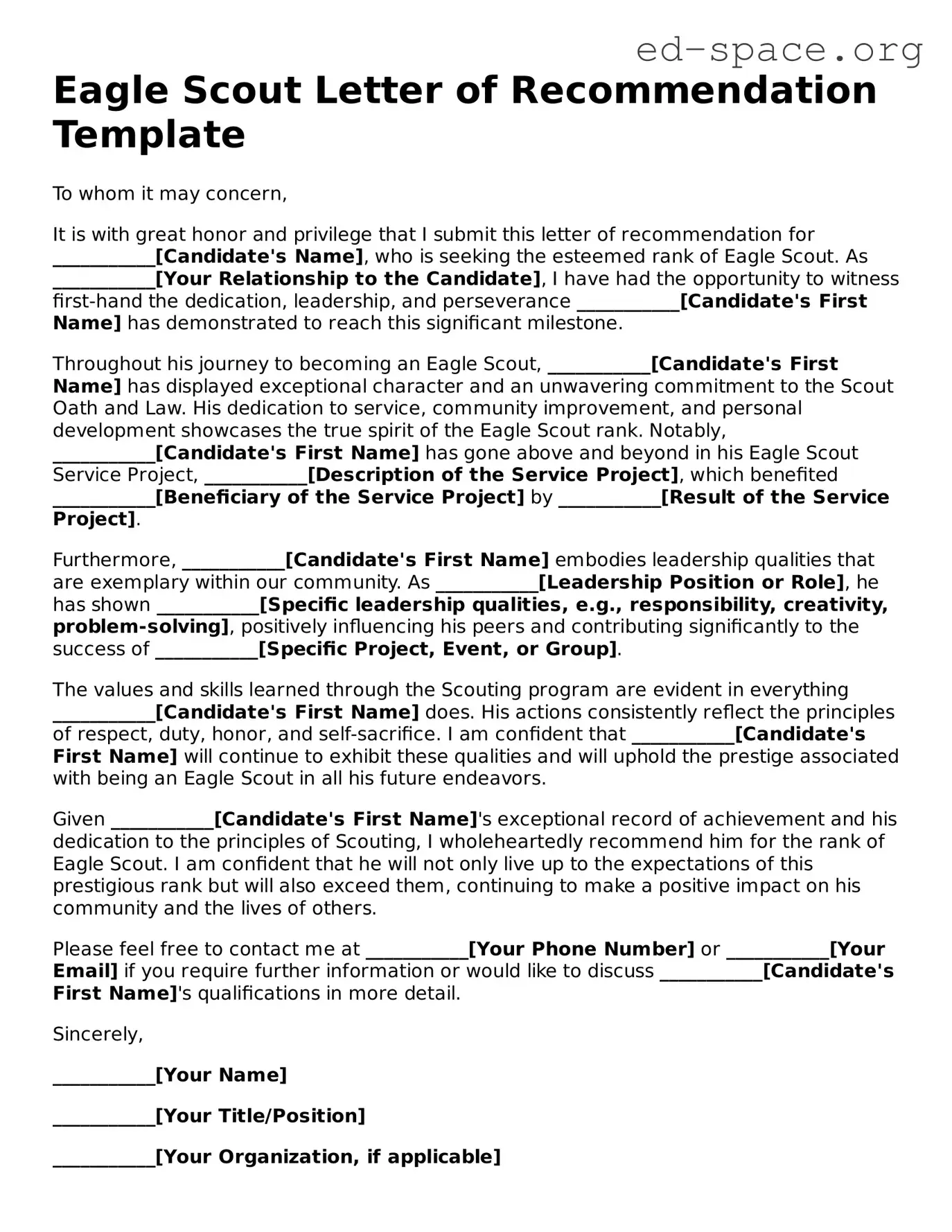Eagle Scout Letter of Recommendation Template
To whom it may concern,
It is with great honor and privilege that I submit this letter of recommendation for ___________[Candidate's Name], who is seeking the esteemed rank of Eagle Scout. As ___________[Your Relationship to the Candidate], I have had the opportunity to witness first-hand the dedication, leadership, and perseverance ___________[Candidate's First Name] has demonstrated to reach this significant milestone.
Throughout his journey to becoming an Eagle Scout, ___________[Candidate's First Name] has displayed exceptional character and an unwavering commitment to the Scout Oath and Law. His dedication to service, community improvement, and personal development showcases the true spirit of the Eagle Scout rank. Notably, ___________[Candidate's First Name] has gone above and beyond in his Eagle Scout Service Project, ___________[Description of the Service Project], which benefited ___________[Beneficiary of the Service Project] by ___________[Result of the Service Project].
Furthermore, ___________[Candidate's First Name] embodies leadership qualities that are exemplary within our community. As ___________[Leadership Position or Role], he has shown ___________[Specific leadership qualities, e.g., responsibility, creativity, problem-solving], positively influencing his peers and contributing significantly to the success of ___________[Specific Project, Event, or Group].
The values and skills learned through the Scouting program are evident in everything ___________[Candidate's First Name] does. His actions consistently reflect the principles of respect, duty, honor, and self-sacrifice. I am confident that ___________[Candidate's First Name] will continue to exhibit these qualities and will uphold the prestige associated with being an Eagle Scout in all his future endeavors.
Given ___________[Candidate's First Name]'s exceptional record of achievement and his dedication to the principles of Scouting, I wholeheartedly recommend him for the rank of Eagle Scout. I am confident that he will not only live up to the expectations of this prestigious rank but will also exceed them, continuing to make a positive impact on his community and the lives of others.
Please feel free to contact me at ___________[Your Phone Number] or ___________[Your Email] if you require further information or would like to discuss ___________[Candidate's First Name]'s qualifications in more detail.
Sincerely,
___________[Your Name]
___________[Your Title/Position]
___________[Your Organization, if applicable]
___________[Date]
